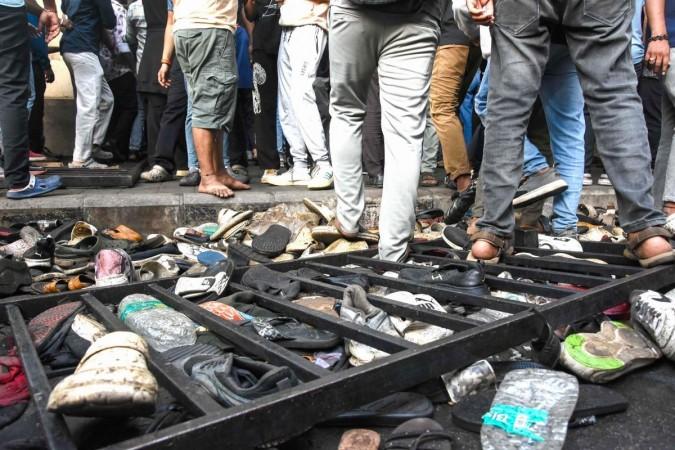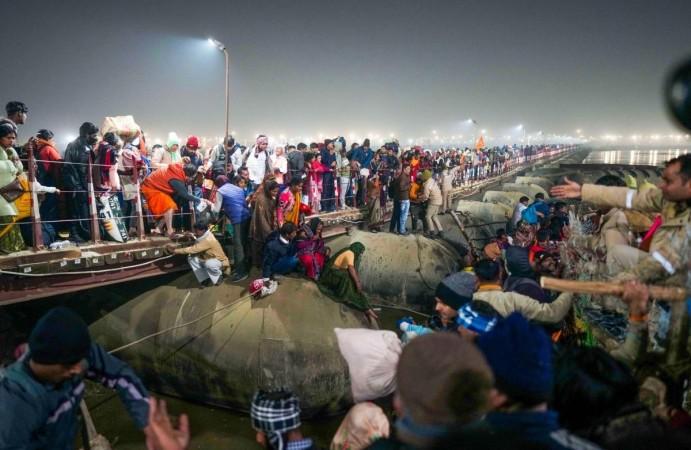
The recent stampede in Bengaluru, which marred what should have been a jubilant city-wide celebration of Royal Challengers Bengaluru's first IPL title, is not an isolated aberration but part of a deeply troubling pattern in Indian urban management. The loss of life and the chaos that unfolded near the Chinnaswamy Stadium are the latest in a series of preventable tragedies each one a grim reminder of the consequences of neglecting urban planning, public safety, and political accountability.
The events in Bengaluru echo the horrors witnessed in Prayagraj earlier this year, where a religious congregation by the banks of the Ganges descended into pandemonium, resulting in multiple fatalities and injuries. That incident, much like the stampede of Hathras where over 100 people were trampled in a congregation of a Baba, who was not even named in the FIR, or the ones like Godavari Pushkaralu in Rajahmundry in 2015 and the Elphinstone Road railway bridge tragedy in Mumbai in 2017, and many others, keeps exposing the systemic failure to anticipate crowd dynamics, provide adequate emergency infrastructure, and enforce basic safety protocols.
In all these cases, the aftermath has followed a familiar and disheartening pattern: initial outrage, promises of thorough investigation, and then a slow, bureaucratic fade into oblivion, with little to no meaningful accountability for those responsible.
Unfortunately, it has started to give the appearance of a bigger malaise; when we fail to make people accountable in incidents of national tragedy like Pahalgam and many more, the accountability at all levels will continue to be missing, leading to such terrible incidents.
Let's not become a nation very insensitive with scant respect for human life. Dr. Shashi Tharoor, Member of Parliament had once mentioned, "Every tragedy in public spaces is not just an accident but often the sum of ignored warnings and unheeded lessons."
At the heart of these recurring disasters is a fundamental flaw in our approach to urban growth and public event management. Indian cities, especially their historic cores, are already bursting at the seams. Yet, large gatherings, be they sporting celebrations, religious festivals, or political rallies, continue to be staged in the most congested quarters, with scant regard for the limitations of space, infrastructure, and emergency access.
The time has come to recognize that such events must be relocated to purpose-built or other open venues on the peripheries of our cities, where crowd control, parking, and emergency response can be managed with far greater efficacy. The inertia that keeps these gatherings in the heart of our cities is often driven by political convenience and the optics of mass mobilization, rather than any genuine concern for public welfare.
This issue is compounded by the unchecked vertical growth of our urban centers. Nowhere is this more apparent than in Delhi, where a frenzy of high-rise construction is underway, sanctioned and executed by government agencies themselves. The proliferation of vertical infrastructure residential towers, commercial complexes, and government buildings has not been matched by a proportional expansion in the width of roads, the capacity of sewage systems, or the provision of water and other essential municipal services.

The result is a looming urban nightmare, where the density of occupation far outstrips the city's ability to provide safe, healthy, and efficient living conditions. It is a model of development that is as unsustainable as it is dangerous, and unless this trend is arrested, Delhi is poised to face its own series of avoidable catastrophes.
Political events, too, must not be exempt from these hard truths. The spectacle of mass rallies in the heart of already congested cities serves little purpose beyond the optics of strength and popularity. These gatherings, often organized with minimal notice and maximum disruption, must be subject to the same regulatory scrutiny and spatial relocation as any other large public event. It is a matter of public safety, not political expediency.
The tragedy in Bengaluru must serve as a watershed moment. It is imperative that state governments, urban planners, and political leaders acknowledge the limits of our urban spaces and the folly of ignoring them. Purpose-built venues for large gatherings, strict regulation of event locations, and a moratorium on unchecked vertical expansion without corresponding infrastructural upgrades are not just best practices; they are urgent necessities.
Moreover, when failures do occur, meaningful investigation and genuine accountability must follow, rather than the ritualistic inquiries and scapegoating that have become the norm.
India's cities are the engines of its future. But unless we confront the hard realities of urban planning, crowd management, and political responsibility, they will remain, all too often, the sites of wholly preventable tragedy.
The people of Bengaluru and every Indian city deserve better than this. It is time for the rhetoric of progress to be matched by the reality of prudent, humane, and professional governance.
[Major General Dr. Dilawar Singh is an Indian Army veteran. He contributes regularly to public discourse on issues of public administration.]









